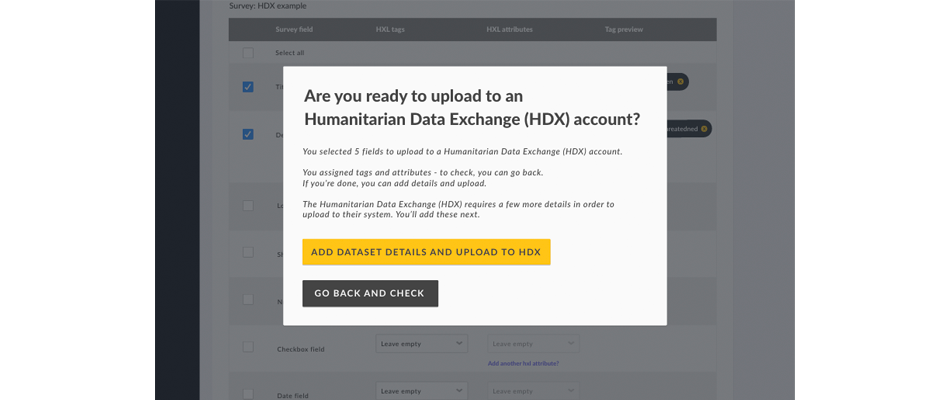HDX Integration
A partnership project between the Humanitarian Data Exchange and Ushahidi. This project aimed to integrate the two platforms in order to make best use of each set of features, primarily the sharing of data openly within the humanitarian sector.
The HDX project was like many other at Ushahidi but is of note due to the HDX team being involved in the user discovery, research and testing in a new and meaningful way.
The HDX project was comprised of several phases:
- Scoping and understanding the remit of the funding opportunities
- Technical investigations
- Platform understanding from a design perspective
- Design investigation and testing
- Proposed integration and implementation
- A report of findings, user testing and future enhancements to the integration for HDX’s consideration
The Isooko project taught me a great deal about how to work with seemingly banal design tasks within a high stress, traumatic context. Taking the exercise of ‘user journey map’ and applying that activity to a personal, family or national crisis is at the very least taxing and stressful to the humans doing the exercise and at worst, risks re-traumatising the individuals involved.
Managing and balancing the needs of two separate systems in an effort to connect them in a way that users were empowered was an intricate and involving process. The final designs included within each platform as many learning opportunities as possible for users of the platforms, not only from a technical ‘how to’ perspective but also sought to recommend best practices when dealing with and sharing humanitarian data.
 HDX data tagging
HDX data tagging
 HDX configuration
HDX configuration
 HDX exporting
HDX exporting
 HDX confirmation
HDX confirmation